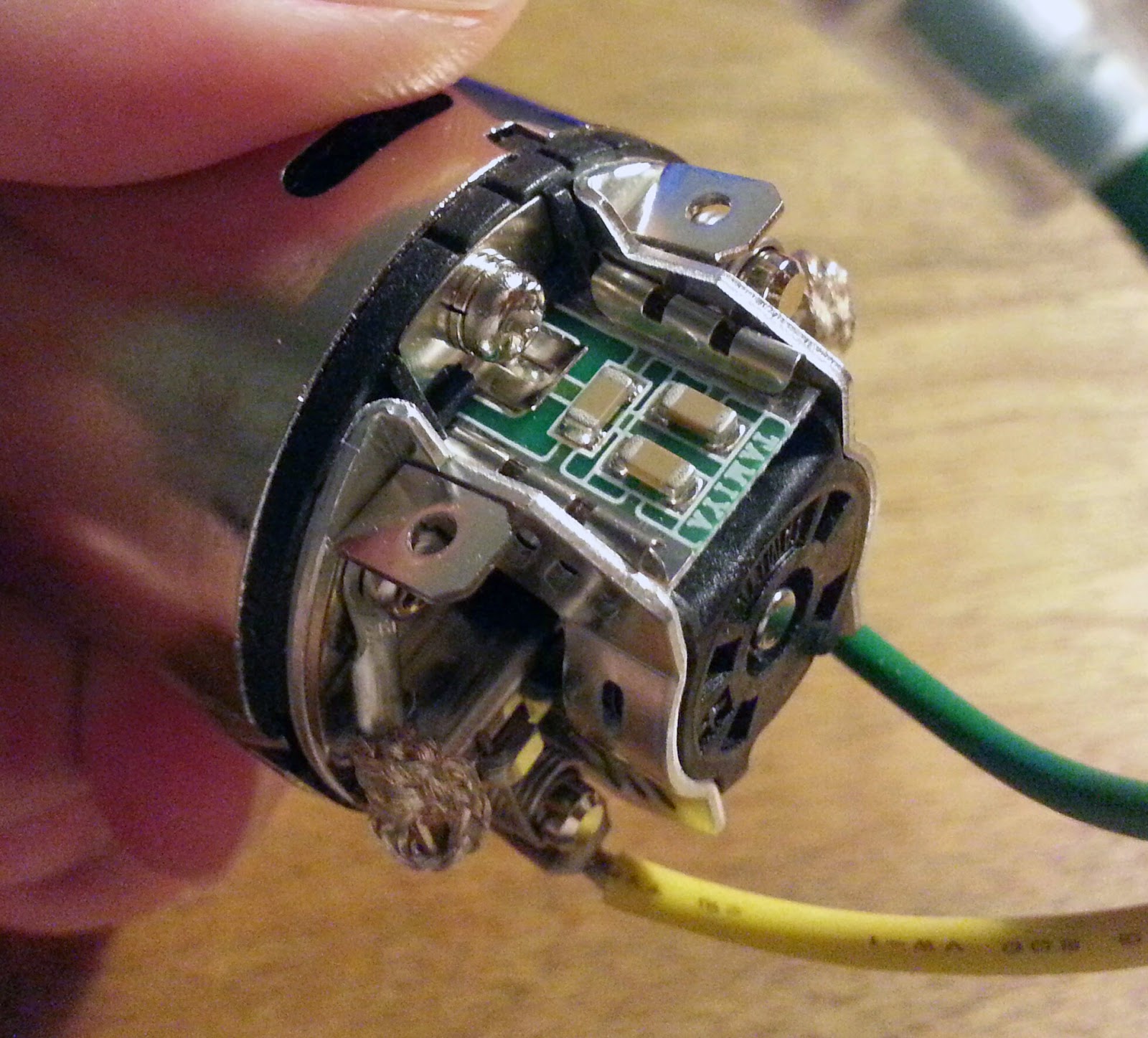So, the first upgrade I got was a new motor to replace the stock 540 "silver can" that came with the buggy. My Electronic Speed Controller (ESC) was for brushed motors that had 25 turns or more, so I was quite limited in the choices out there. I contemplated getting the Tamiya sport-tuned and torque-tuned motors, but finally decided to get the Tamiya GT-tuned motor instead. This motor packs 19,000 rpm and a powerful 500gf/cm of torque at 7.2V. I figured it'd be more than enough to get my buggy roaring away.
Alas, when I tried to put the GT-tuned motor into the diecast casing, it couldn't fit!! Turns out the motor is slightly wider than the standard 540-sized motor. OMG. In the end, I had to use the stock motor after all....
 |
The stock 540 motor fits snugly into the case
|
 |
Mystery numbers on the side of my silver can
Not all silver can motors are alike. Apparently, you can either get a Mabuchi or Johnson motor in your kit. There's a lot of discussion about the differences between the two brands and how to get the best out of them (see here and here for example), but in general it seems that the Johnson motor has a higher torque and slightly lower RPM than the Mabuchis. That said, it seems like the variance in the silver cans is quite large, and whether or not you get a fast/powerful stock motor is a lucky draw.
|
 |
| Looks like I got a Johnson! |
 |
| This Johnson has 4 vents at the end, which got me excited because apparently those with 4 holes are supposed to be super fast.... |
 |
| ....alas, my J-motor only has 2 vents at the sides, so this is probably not the fast version. |
According to the specs, my 540-J motor probably can reach around 14,500 rpm with 255g/cm of torque at 7.2V. Now, I have to figure out if I want my buggy to be able to push to the top RPM my motor can go, or prioritise acceleration instead. The choice between the two depends on the gears I use.
It took me some time to figure out gear ratios, but I think I finally get it. The number that you want to get is called the Final Drive Ratio (FDR). This FDR is a product of the transmission ratio (remember the gears enclosed in the casing earlier) and the spur/pinion gear ratio. The higher the FDR, the more torque or acceleration the car will have at the expense of top speed (RPM). Conversely, a lower FDR gives you a higher top speed but less acceleration.
Confusingly, a high FDR is called a "low gear" and a low FDR is called a "high gear"... similar to how in a real car, 1st gear provides the most power while 5th gear is the fastest.
Even more confusingly, gearing "up" means to decrease the gear ratio - i.e. going from 4th to 5th gear in a car - and vice-versa. So, a motor can be overgeared (i.e. geared up too much) if your pinion is too big and FDR too low. This stresses the motor because it's working extra hard to get top speed. Undergearing (small pinion/high FDR) is also inadvisable.
 |
The Fighting Buggy has a choice of two spur/pinion combinations: a 20T (i.e. teeth) pinion with a 65T spur, or a 15T pinion with a 70T spur. I initially thought I could mix the 20T pinion with the 70T spur, but unfortunately the teeth don't align if you do that. So I was stuck with these two choices.
Recall that the transmission ratio for the Fighting Buggy is 2. So, that means that I can choose a FDR of either (2*65/20) = 6.5 or (2*70/15) = 9.3.
I prefer a buggy with more torque, since I don't think I'll be racing it anytime soon but will probably need that extra oomph when pushing my buggy over rough terrain. So, I decide to go with a FDR of 9.3.
 |
| My 15T pinion and 70T spur ready to grind out the torque |
|
 |
Protective casing screwed on tight, motor and gears all in place. Whew!
Of course, I'll only know if this gearing works after I finally test drive my buggy. |











No comments:
Post a Comment